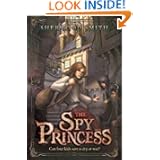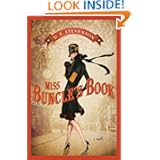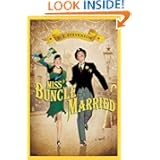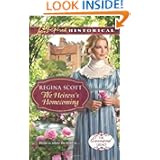What I Read This Weekend . . .
Beholding Bee by Kimberly Newton Fusco --Middle Grades Paranormal Historical Fiction
Beatrice Rose Hockenberry lives in a traveling carnival in the 1940s, but she is NOT one of the attractions, despite the fact that she has a large red diamond-shaped birthmark on her face. If not for the love and care of Pauline, the hot dog cat lady, Bee would be all alone and at the mercy of Ellis, the cruel carnival owner who wants to put Bee on display. Bee endures endless bullying and curious staring, always trying to become invisible. On some days, when life is unbearable, a lady in an orange flappy hat appears to comfort Bee. Bee also loves to snuggle her (formerly stray) dog Peabody and the tiny piglet Cordelia, who has her own special needs. Then Bee's safety net is broken and she runs off with her dog and Cordelia to find a new home. She comes across the house of her dreams and is taken in by two eccentric elderly ladies, one of whom is the lady in the flappy hat. Bee's "aunts," as she calls them, don't know how to cook on a stove, barely eat anything except Bee's cake, want her to wear frocks 100 years out of style and disappear whenever anyone comes around. Soon Bee begins to realize that no one else can see her aunts. She just accepts the fact that no one believes her and goes on trying to survive. When her aunts insist she attend school, Bee finds herself in a "special" classroom where the kids are separated from "normal" kids and forgotten about. There she meets Ruth Ellen, a girl with a leg brace, who welcomes Bee into her family. Gradually, Bee learns about love and courage and standing up for herself.
This is another wonderful, poignant, touching story by Kimberly Newton Fusco. Bee is such a fabulous character. She's plucky but very emotionally fragile. My heart went out to her and I was rooting for her to survive her hardships with her head held high. She learns some wonderful lessons, delivered in the form of character dialogue, that everyone should learn. I couldn't put the book down. I had to know how Bee turned out and the story of the mysterious aunts. The author tells the story in the first person from Bee's point of view. I don't know how she does it, but she makes it believable and interesting. Bee is wise beyond her years without being precocious. The language sounds like a 12 year old but a 12 year old who has experienced things most kids her age haven't. I really got inside Bee's head and felt like I was following beside her, helping her to be strong. I adored Bee's animal companions and the sweet, humorous touch they added to the story. When I was Bee's age, my terrier was my best friend so I could relate. I had fun guessing which real life figures the aunts were modeled after. I guessed one but not the other. The prose is beautifully written and accessible for the target audience yet difficult enough for adults. (Mrs. Swift constantly has Bee look up words in the dictionary.) I admire the way the author can share the moral of her story without beating the kids over the head with it. However, I didn't quite connect with Bee the way I did with Charlie Anne. I suppose it's because Charlie Anne's disability was something that people couldn't see so it was, in a way, more difficult for her than Bee's physical issue. Bee could have stood up for herself more easily. I also felt that this story was a variation on the same theme as the author's previous two books so that knocked it down a notch in my opinion. Everyone who has ever felt different and or been bullied, should read this book.
Dear America : A City Tossed and Broken, San Francisco 1906 by Judy Blundell -- Middle Grades Historical Fiction
Minette Bonner loves the tavern her family owns in Philadelphia and can't imagine any other life. When her father disappears Minnie's whole life changes. A wealthy businessman called in a loan with the tavern as collateral and now Minnie is being sent to Mr. Sump's house to be a lady's maid. Mrs. Sump is a social climber and being excluded from Philadelphia Society, the family is headed to San Francisco. It's not easy being a maid to the demanding Mrs. Sump and her sullen daughter. Mr. Sump may not be the kind-hearted helping man she thought he was and Lilly seems to have a secret burden. Two days after arriving, the earth buckles and shakes and Minnie's life is forever changed once again. Because of the chaos in the aftermath of the earthquake, she has a chance to start fresh and live the life she's always dreamed of. Can she live with herself if she does? This is an interesting story about the great San Francisco earthquake and fire. The earthquake and fire are described in such incredible detail that you will feel you are Minnie and living through it. I liked that the story didn't get complicated by romance like the other books on this subject I've read. I also liked that it showed different class levels and the attitudes towards particular people. My only complaint is that the Chinese were left out but that would be difficult in a book for this age group. Minnie is not a very appealing character. She's angry and jealous and her jealously causes her to make poor decisions. She grows up a lot in the days following the earthquake though and finally redeems herself at the end. I really liked this newest entry in the Dear America series and recommend it girls and boys ages 11+.
Beholding Bee by Kimberly Newton Fusco --Middle Grades Paranormal Historical Fiction
Beatrice Rose Hockenberry lives in a traveling carnival in the 1940s, but she is NOT one of the attractions, despite the fact that she has a large red diamond-shaped birthmark on her face. If not for the love and care of Pauline, the hot dog cat lady, Bee would be all alone and at the mercy of Ellis, the cruel carnival owner who wants to put Bee on display. Bee endures endless bullying and curious staring, always trying to become invisible. On some days, when life is unbearable, a lady in an orange flappy hat appears to comfort Bee. Bee also loves to snuggle her (formerly stray) dog Peabody and the tiny piglet Cordelia, who has her own special needs. Then Bee's safety net is broken and she runs off with her dog and Cordelia to find a new home. She comes across the house of her dreams and is taken in by two eccentric elderly ladies, one of whom is the lady in the flappy hat. Bee's "aunts," as she calls them, don't know how to cook on a stove, barely eat anything except Bee's cake, want her to wear frocks 100 years out of style and disappear whenever anyone comes around. Soon Bee begins to realize that no one else can see her aunts. She just accepts the fact that no one believes her and goes on trying to survive. When her aunts insist she attend school, Bee finds herself in a "special" classroom where the kids are separated from "normal" kids and forgotten about. There she meets Ruth Ellen, a girl with a leg brace, who welcomes Bee into her family. Gradually, Bee learns about love and courage and standing up for herself.
This is another wonderful, poignant, touching story by Kimberly Newton Fusco. Bee is such a fabulous character. She's plucky but very emotionally fragile. My heart went out to her and I was rooting for her to survive her hardships with her head held high. She learns some wonderful lessons, delivered in the form of character dialogue, that everyone should learn. I couldn't put the book down. I had to know how Bee turned out and the story of the mysterious aunts. The author tells the story in the first person from Bee's point of view. I don't know how she does it, but she makes it believable and interesting. Bee is wise beyond her years without being precocious. The language sounds like a 12 year old but a 12 year old who has experienced things most kids her age haven't. I really got inside Bee's head and felt like I was following beside her, helping her to be strong. I adored Bee's animal companions and the sweet, humorous touch they added to the story. When I was Bee's age, my terrier was my best friend so I could relate. I had fun guessing which real life figures the aunts were modeled after. I guessed one but not the other. The prose is beautifully written and accessible for the target audience yet difficult enough for adults. (Mrs. Swift constantly has Bee look up words in the dictionary.) I admire the way the author can share the moral of her story without beating the kids over the head with it. However, I didn't quite connect with Bee the way I did with Charlie Anne. I suppose it's because Charlie Anne's disability was something that people couldn't see so it was, in a way, more difficult for her than Bee's physical issue. Bee could have stood up for herself more easily. I also felt that this story was a variation on the same theme as the author's previous two books so that knocked it down a notch in my opinion. Everyone who has ever felt different and or been bullied, should read this book.
Dear America : A City Tossed and Broken, San Francisco 1906 by Judy Blundell -- Middle Grades Historical Fiction
Minette Bonner loves the tavern her family owns in Philadelphia and can't imagine any other life. When her father disappears Minnie's whole life changes. A wealthy businessman called in a loan with the tavern as collateral and now Minnie is being sent to Mr. Sump's house to be a lady's maid. Mrs. Sump is a social climber and being excluded from Philadelphia Society, the family is headed to San Francisco. It's not easy being a maid to the demanding Mrs. Sump and her sullen daughter. Mr. Sump may not be the kind-hearted helping man she thought he was and Lilly seems to have a secret burden. Two days after arriving, the earth buckles and shakes and Minnie's life is forever changed once again. Because of the chaos in the aftermath of the earthquake, she has a chance to start fresh and live the life she's always dreamed of. Can she live with herself if she does? This is an interesting story about the great San Francisco earthquake and fire. The earthquake and fire are described in such incredible detail that you will feel you are Minnie and living through it. I liked that the story didn't get complicated by romance like the other books on this subject I've read. I also liked that it showed different class levels and the attitudes towards particular people. My only complaint is that the Chinese were left out but that would be difficult in a book for this age group. Minnie is not a very appealing character. She's angry and jealous and her jealously causes her to make poor decisions. She grows up a lot in the days following the earthquake though and finally redeems herself at the end. I really liked this newest entry in the Dear America series and recommend it girls and boys ages 11+.



















